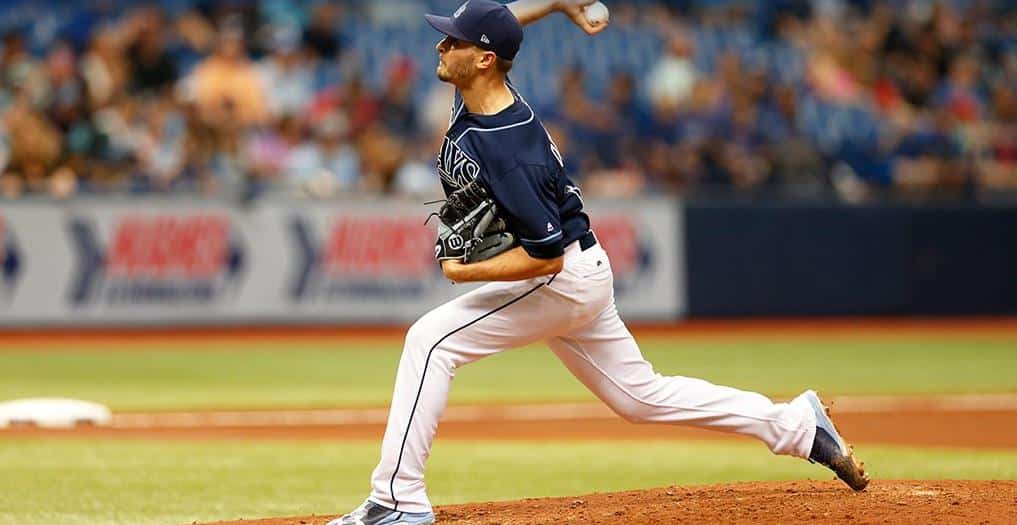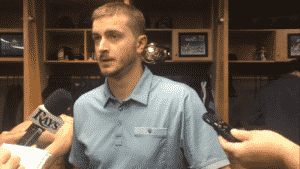
With sights set on the 2018 season, let’s hand out some report cards for the 2017 campaign.
Pitchers with fewer than 15 starts do not qualify for a grade.
Which means, despite showing flashes of brilliance in his rookie season, Jacob Faria (14) will not have a report card. Also, the on-again-off-again starter, Austin Pruitt is exempt from this list.
Grades are based on a few key numbers
ERA — FIP — BABIP — K/9 — WAR
ERA: It’s easy to see why this is a significant measure of performance
FIP (Fielding Independant Pitching): This is a truer measure of how a pitcher performed; removing factors out of his control, such as defensive inefficiencies.
BABIP: For the most part, a pitcher is going to hover around the .300 mark when it comes to batting average on balls in play. Trends in either direction typically provide some insight on how lucky/unlucky they might have been. Although, other factors (i.e. Ground Ball %, Hard Contact %) are certainly at play.
K/9: A general sense of how dominant a pitcher can be. However, a high K/9 is over emphasized if you can’t work deep into games. Which is where the next stat comes into play.
WAR: Almost the standard for measuring success among players now, Wins Above Replacement accounts for innings pitched and the success during those innings. Think of it as FIP with an emphasis on innings pitched.
Jake Odorizzi is third on our list.
How did his 2017 turn out?
Jake Odorizzi’s 2017 Season
(10 wins, 8 loses; 127 strikeouts) 
- 143.1 IP
- 28 Starts
- 4.14 ERA
- 5.43 FIP
- .227 BABIP
- 7.97 K/9
- 0.1 WAR
Notes:
Odorizzi posted a second consecutive 10-win season in 2017. Those wins were hard to come by, especially given his two stints on the disabled list over the course of the season. But Odorizzi earned each of those 10 wins. Watching him pitch this season it was apparent that he was either locked in from the first pitch, or he wasn’t.
And unfortunately, Odorizzi couldn’t rebound from a bad first inning this year. Part of the problem was the career-high 30 home runs allowed. Although on the backside of that, he allowed a career-low in hits.
Nine of his 28 starts were shorter than 5.0 innings, including two back-to-back August starts where he didn’t make it through four. But mixed in between were some stellar outings, like September 5th when he nearly no-hit the Twins. As the season closed, it seemed like Odorizzi had found his groove, given that three of his 10 wins came in the final month of play.
Just a little too late for a real impact.
Unfortunately, his streak of 15 consecutive games allowing a home run are what is most memorable from the 2017 season. If the home runs and injuries don’t deter you too much, his season was in line with what the Rays have come to expect from him. He’s not going to be that front-end type guy.
Now the big question for 2018: will he remain in a Rays uniform? He is one of the names mentioned in every Tampa Bay trade rumor as he enters 2018 arbitration eligible.
To keep him here, Tampa Bay would have to pay him roughly $6.5 million. Being that he spent a chunk of this season on the disabled list and was often injured. Almost assuredly the Rays will accept $6.5M to see what Odorizzi can do with a fully healthy season? The only other option is if they receive an agreeable asset through a trade scenario.
You should be watching closely this off-season to see what develops on the trade-front.
2017 Overall Grade: C





